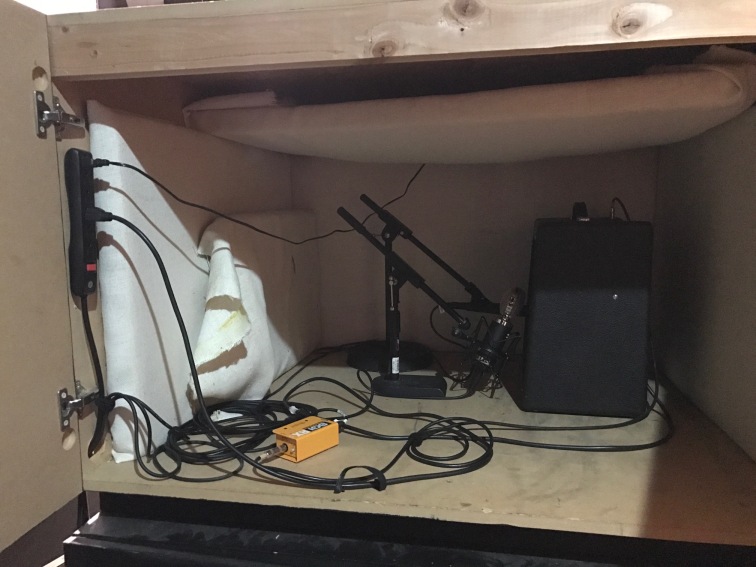
I had a church ask me about reducing stage noise, and one thing that can help is building an amp isolation box (or iso box) – this means the guitar amp can move to a place where it can get noisy without messing with others on stage that need to hear other things – or causing the sound person to ask them to turn it down because it’s too loud in the house.
Couple of things to consider:
 Find a place backstage. Or, you can just put your amp on the iso box on stage, but most aren’t pretty enough to do that. Randall makes one we’ve used that’s more of a replacement speaker for the amp that can work as an amp “stand” if you feel like you need to still see the amp.
Find a place backstage. Or, you can just put your amp on the iso box on stage, but most aren’t pretty enough to do that. Randall makes one we’ve used that’s more of a replacement speaker for the amp that can work as an amp “stand” if you feel like you need to still see the amp.
Amps need electricity, signal, and airflow – they get hot in a box! Easiest way to deal with this is to cut 2″ holes for air intake and cable ways, then mount a computer fan in the box that blows hot air out. Middle Atlantic makes a fan for server racks that runs on 110V and runs forever. Of course the fans get left on between Sundays sometimes…

Use a Radial SGI (yellow box, above) to send an instrument cable send from your pedal board to the amp via XLR cable since it’s going to be longer than 25′. Longer than that means it’s susceptible to interference & sounding thin.
You can make the box out of 3/4″ MDF and make it big enough to fit stuff in as well as maneuver around in. Suggestion – make all of the dimensions different – ie 3′ x 3.5′ x 4′ so that the box doesn’t want to resonate at certain frequencies (avoid making a cube). The box will be heavy, and you need to make sure that it can fit through a doorway.
Absorption – finally, the most important part. This helps the mic’d amp not sound like it’s in a box, as well as cutting down the amount of sound that escapes. I would suggest using 2″ Rock Wool like Roxul Rockboard 60 because it’s inexpensive & really works well at broadband absorption (ie lows, mids, and highs). Generally the thinner the absorptive material, the less good it is at absorbing, particularly low frequencies. It’s a good idea to use burlap or some material to wrap the Rock Wool because like fiberglass, it will give you splinters if you brush against it.
Good luck, and turn it up!
More info on in-ear monitors from Shure (including an awesome clip from This Is Spinal Tap)

Hi there! Thanks so much for linking to our blog post at the end of this post. Your link is broken, though, because you have the URL in it twice. When you mouse over, you’ll see what I mean.
LikeLike
thanks!
LikeLike